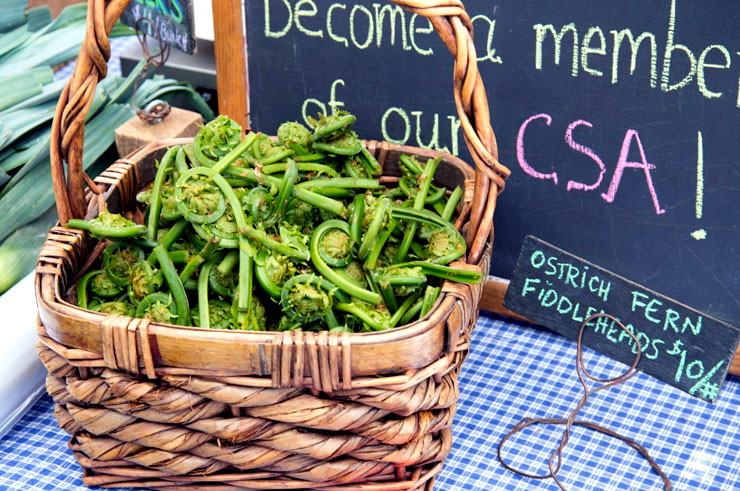
I was seduced by a fiddlehead fern (aka ostrich fern)…
Maybe I’ve been watching too much Andrew Zimmern as of late, but somewhere along the way I’ve developed an affinity for ‘bizarre’ foods. Just can’t seem to resist when it comes to somewhat off-the-beaten-path finds. Curiosity always gets the best of me. Have gone so far as to inquire about getting a whole pig’s head from a local farmer to make head cheese; unfortunately, it was way too expensive (close to $100 for the whole head).
Debated whether to even post this, as I recognize that fiddleheads are not something most will readily come by. Ultimately decided that even the ‘strange’ or unfamiliar deserves a little recognition from time to time. If nothing else, fiddlehead ferns highlight nature’s vast biodiversity. Besides, fiddleheads are one of spring’s quintessential vegetables that deserve a little press.
Until today, had never tried a fiddlehead fern (or at least I can’t recall doing so). However, while in upstate New York this past weekend for a fantastic Ramp Festival (more on that in the near future), we stopped at the Hudson Farmers’ Market, and this rather unusual plant and I crossed paths (along with some burdock root; grabbed a few of those as well). Had nothing specific in mind for these fiddleheads; nonetheless, I found myself grabbing a few big handfuls to bring back to D.C.
First, you should not eat fiddleheads raw. In the raw, they may contain a toxin; however, boiling deactivates this toxin and renders fiddleheads safe to eat. I’ve also read [on the CDC website] that while some common ferns may be poisonous or carcinogenic, ostrich fern is considered to be non-toxic. Either way, it’s better to be safe then sorry. So, plunge them into salted, boiling water for a few minutes, then transfer to an ice water bath so they remain crisp and retain their bright green color. After that, you can lightly saute in olive oil or butter; with peace of mind that they are safe to eat.
What do they taste like?
I was expecting bold flavors, but fiddleheads are subtle, with a crispy texture. A milder version of asparagus or even artichoke comes to mind. My plan was to do a simple preparation with the fiddleheads. Perhaps, simply sauteing them in butter, or maybe brown butter, my latest discovery (after a quick blanch), with garlic and shallot. Somehow, as is often the case, my simple ideas morph into something a bit more elaborate.
Finally decided on…fiddleheads over a bed of black (beluga) lentils (with Serrano ham) and sauteed maitake mushrooms. You can top with a few seared sea scallops, seared fish (used Hawaiian Opah [aka Moonfish], but any firm fleshed fish would work well), or even a poached/fried egg. Indecisive as always, I prepared one with seared scallops and one with fish. Always good to have options, right? If you can’t find fiddleheads, you can still enjoy this dish, just replace the fiddleheads with more readily available spring asparagus.
A bit more on fiddleheads…
This type of fern is referred to as the ostrich fern Matteucia struthiopteris. It’s young, tender shoots are referred to as fiddleheads, as they resembles the top of a fiddle. They may be found in spring and early summer, and grow wild, predominantly in the Northeast. If foraging for fiddleheads, be sure you know what you’re looking for; as there is another fern, called the Bracken Fern, which looks nearly identical, but is poisonous.
A word on Opah…
Opah, also known as Moonfish, comes from Hawaii. You cook Opah like you would a piece of ahi tuna, quickly seared on both sides, rare to medium-rear in the center.
Fiddleheads Over a Bed of Black Lentils, Sauteed Maitakes, and Seared Sea Scallops and/or Fish
Below are a few suggestions for topping the lentils…I’ve kept the amounts vague, as you can add as little or as much as you like. You can add seared sea scallops, any variety of fish, or even a poached or fried egg.
Black (beluga) lentils (recipe below)
A handful of fiddleheads or bunch of asparagus
Sauteed mushrooms (such as maitakes, shittakes, or even morels if you are so lucky)
Sea Scallops and/or Fish (such as Opah, halibut, salmon, sturgeon; 4-5 ounces per serving)
To cook fiddleheads: Bring a pot of salted water to a boil. Drop in the fiddleheads and boil for 2-3 minutes. Transfer to a bowl of ice water. Drain. Heat a large pan with a tablespoon or two of olive oil and/or butter. Add the fiddleheads, season with sea salt and black pepper, saute a few minutes.
To cook mushrooms: Heat a large skillet with a tablespoon or two of olive oil. When hot, add the mushrooms in a single layer, being sure not to crowd the pan (otherwise they’ll steam and not get crispy). Season with salt and pepper to taste. Cook, stirring occasionally, until golden brown, about 8 to10 minutes. Repeat in batches if necessary.
To cook sea scallops: Pat the scallops dry (you want them as dry as possible). Season with sea salt and black pepper. Heat a small pan with a tablespoon of olive oil over high heat. When smoking hot, add the sea scallops. Cook for about 1 1/2 minutes, until they develop a nice sear and turn golden brown, flip and cook for 1 more minute (make sure not to overcook, otherwise they will turn rubbery).
To cook Opah (per 4-5 ounce serving): Pat the Opah dry. Season with sea salt and black pepper. Heat a small pan with a tablespoon of olive oil over high heat. When smoking hot, add the Opah. Cook for about 2 minutes until it develops a nice sear and turns golden brown, flip and cook for another 2 minutes. Note: Cooking time may vary slightly, depending on the thickness of the fish.
Putting it all together: Plate the lentils in each bowl, top with sauteed mushrooms, fiddleheads, and seared sea scallops or fish.
Black (Beluga) Lentils
serves 4
2 1/2 ounces (1 thick slice) Serrano ham or Apple-wood smoked bacon, sliced into thin strips
1 tablespoon olive oil
1/2 cup white onion, small dice
1/2 cup carrot, small dice
3 sprigs fresh thyme
1-2 sprigs fresh rosemary
2 small bay leaves
1 cup black (beluga) lentils
2 cups chicken stock, vegetable stock, or water
Sea salt and freshly ground black pepper to taste
Heat a pot over medium-high heat. Add the Serrano and cook a few minutes until crispy (if using bacon, it will take a few extra minutes). Remove and set aside.
Heat a tablespoon of olive oil, add the onions, and saute a few minutes until translucent. Add the carrot and cook 1 minute. Add the fresh herbs, bay leaves, lentils, and stock or water. Cover, bring to a boil, then turn the heat down to a simmer. Simmer for ~15 minutes, until the lentils are al dente. Stir in the reserved Serrano and season with salt and pepper.
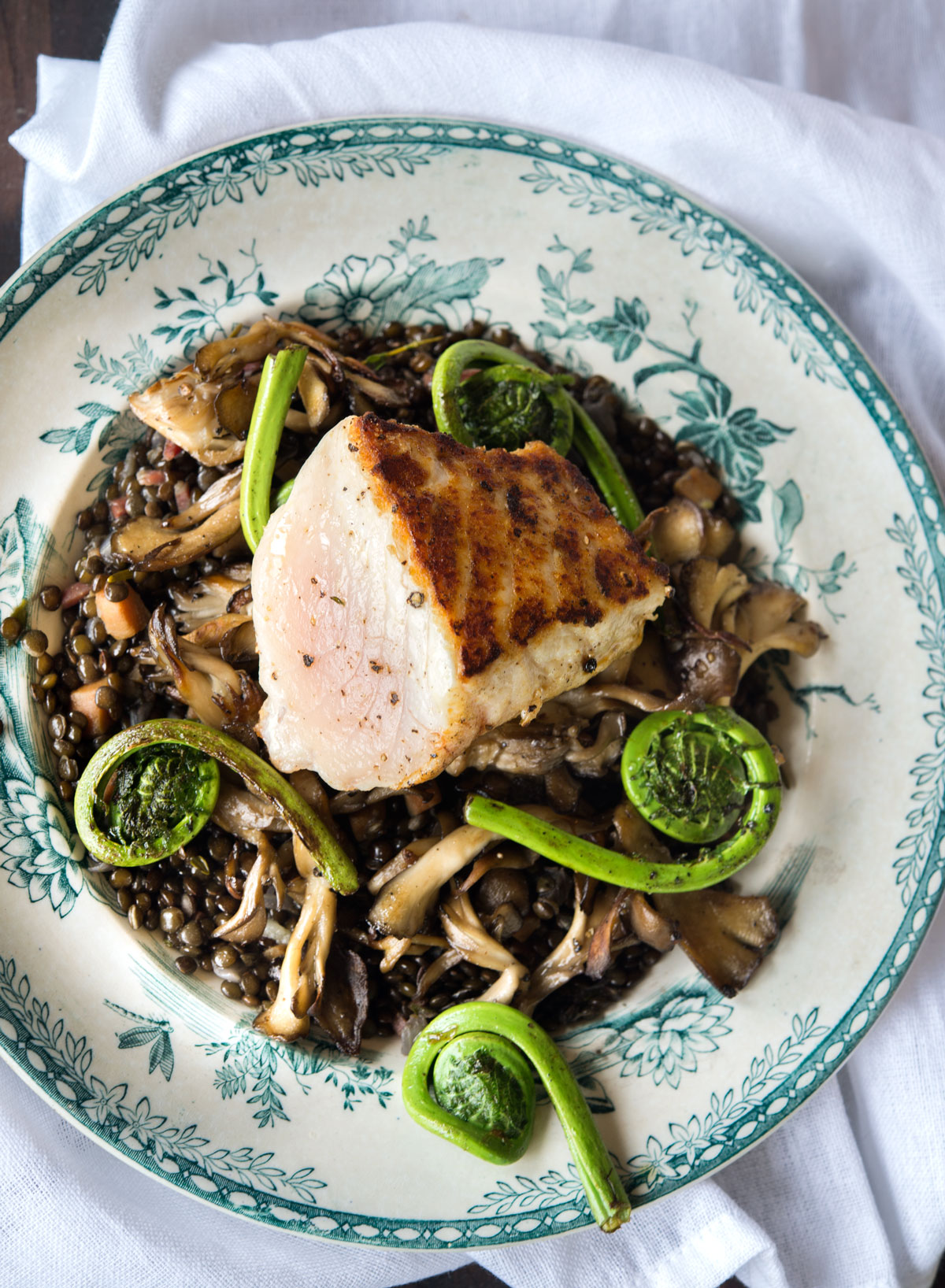







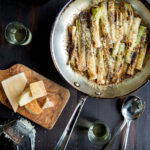
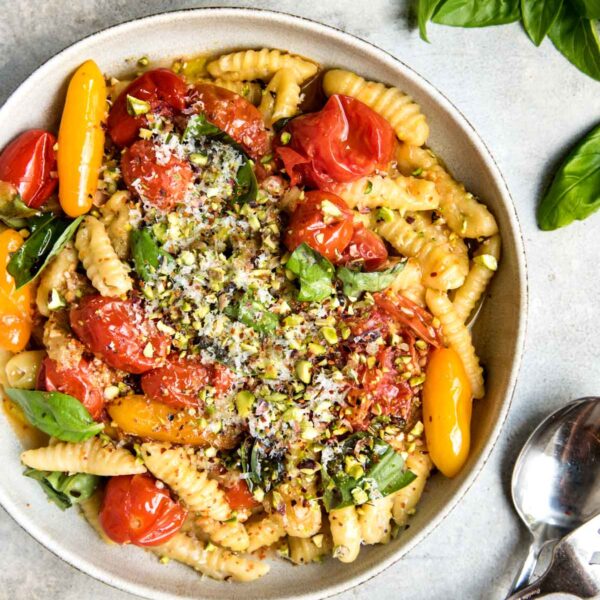
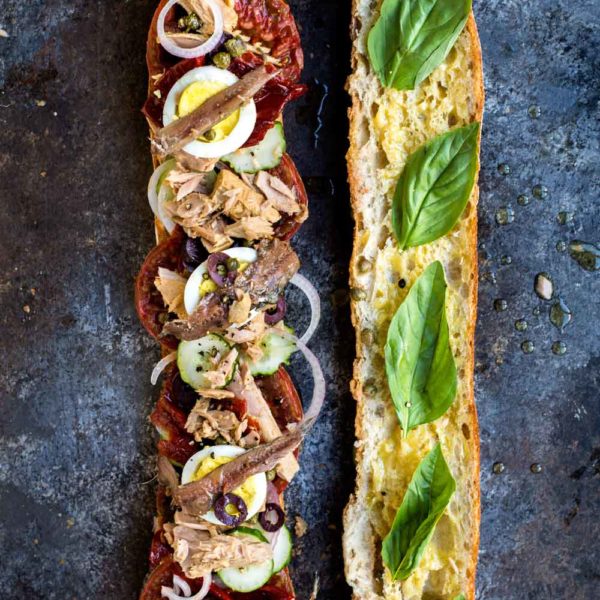
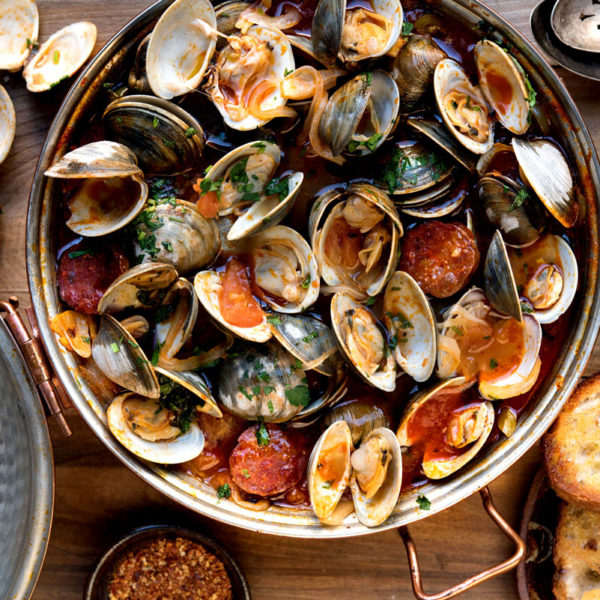


8 comments
Happy Valley Chow
Oh my gosh that looks incredible! I have never had or cooked with fiddlehead before, have never seen them available! Definitely want to give them a try 🙂
Happy Blogging!
Happy Valley Chow
Happy Valley Chow
Oh my gosh that looks incredible! I have never had or cooked with fiddlehead before, have never seen them available! Definitely want to give them a try 🙂
Happy Blogging!
Happy Valley Chow
Amy (Savory Moments)
What a beautiful dish! I've had fiddleheads a couple of times (they actually sell them seasonally at our local grocery). They are a very interesting ingredient to try. I like the "bizarre" foods portion of your blog – it's neat to see less common ingredients!
Amy (Savory Moments)
What a beautiful dish! I've had fiddleheads a couple of times (they actually sell them seasonally at our local grocery). They are a very interesting ingredient to try. I like the "bizarre" foods portion of your blog – it's neat to see less common ingredients!
Carole
Carole's Chatter is collecting scallop dishes today. This is a nice one. I do hope you pop over and link in. This is the link . Cheers
Carole
Carole's Chatter is collecting scallop dishes today. This is a nice one. I do hope you pop over and link in. This is the link . Cheers
Carole
Linda, thanks for stopping by and adding to the scallopy collection. I have signed up to follow you and hope you will follow Carole's chatter, too. Cheers
Carole
Linda, thanks for stopping by and adding to the scallopy collection. I have signed up to follow you and hope you will follow Carole's chatter, too. Cheers